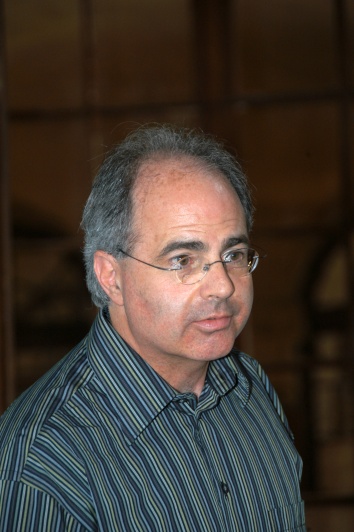Paul Shapiro Elected to Chair the American Physical Society Division of Astrophysics
9 May 2013
Paul R. Shapiro, the Frank N. Edmonds, Jr., Regents Professor in Astronomy at The University of Texas at Austin, has been elected to a four-year term to the Chair line of the Division of Astrophysics of the American Physical Society.
The American Physical Society (APS) is the principal professional society in physics in North America. Its Division of Astrophysics represents more than 2,400 scientists working in many fields of astrophysics and cosmology.
APS division chairs are chosen through votes of all division members. Members elected to the Chair line progress through the top offices in the division. Shapiro will serve as Vice Chair in 2013-2014, Chair-Elect in 2014-2015, Chair in 2015-2016, and Chair Emeritus in 2016-2017.
Shapiro was elected a Fellow of the APS in 2011. His citation reads:
“For outstanding contributions to astrophysics and cosmology which advanced our understanding of cosmic reionization, structure formation, gas dynamics, dark matter and dark energy, the interstellar and intergalactic media, and topics from supernova polarization to relativistic shocks."
Shapiro graduated from Harvard with an Astronomy A.B. (Summa Cum Laude, 1974) and Ph.D. (1979). He held a post-doctoral appointment at Princeton’s Institute for Advanced Study (1978 - 1980) before joining The University of Texas at Austin’s astronomy faculty in 1981. At UT, he is also a member of the Physics Department’s Graduate Studies Committee and a founding member of the Texas Cosmology Center.
With about 200 published papers in theoretical astrophysics, Shapiro has served as principal investigator on numerous NASA, National Science Foundation (NSF), and Department of Energy grants.
He has received numerous awards, including an Alfred P. Sloan Research Fellowship in Physics (1984-1988), UT’s Astronomy Teaching Excellence Award (1988), the National Chair of Excellence from the Universidad Nacional Autónoma de México (1997), UT’s John W. Cox Fellowship for Advanced Study in Astronomy (2004-2006), and the NSF TeraGrid '08 Award for pioneering massively-paralleled supercomputer simulation of cosmic reionization.
Shapiro says his latest research focuses on three major questions: How did the first stars and galaxies reionize the universe in the first billion years after the Big Bang? What can observable consequences of this "epoch of reionization" tell us about cosmology? What is the nature of cosmic dark matter?
— END —






